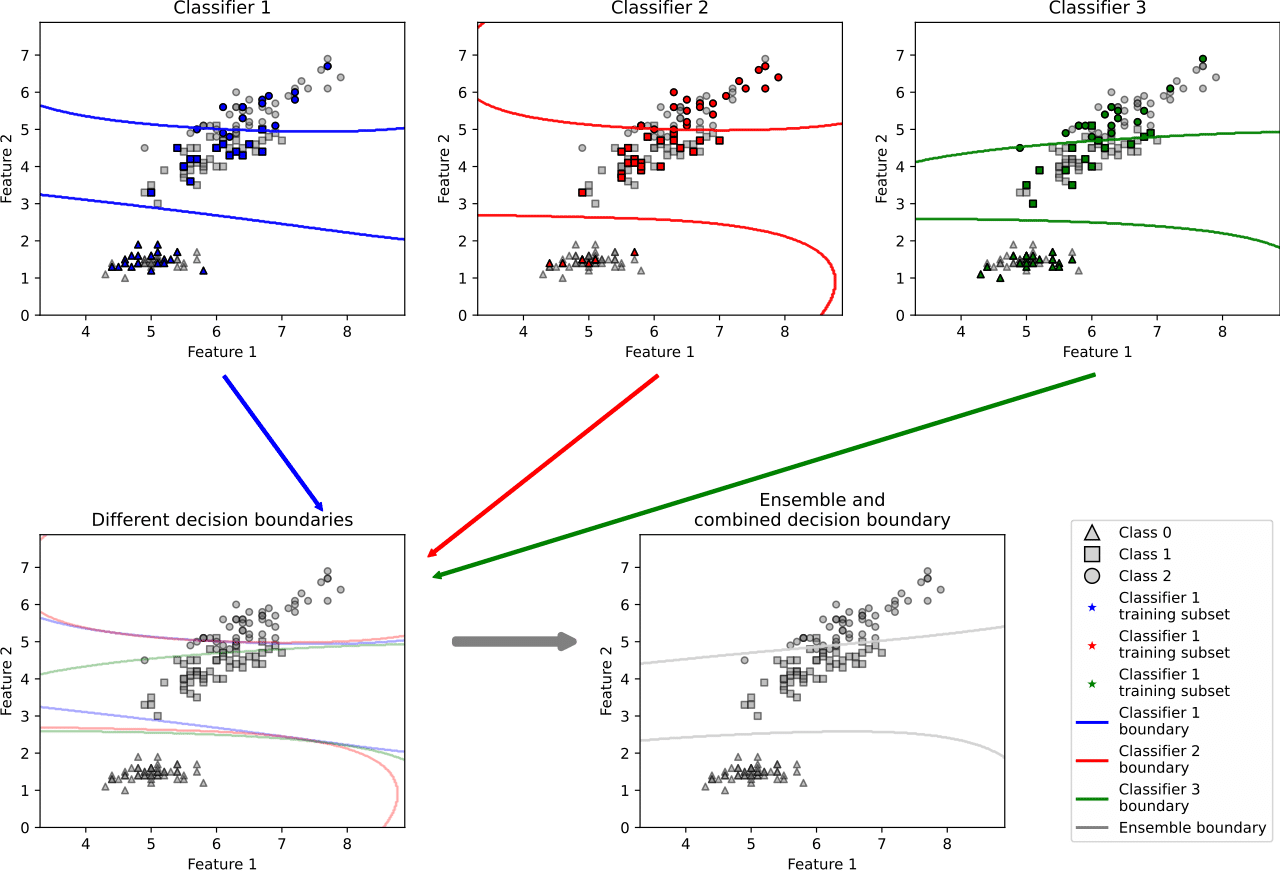Brief information about Weighted Ensemble
A weighted ensemble is a machine learning technique that combines predictions from various models, each assigned a specific weight, to reach a final prediction. By using different weights for individual models, it emphasizes the importance of some models over others, thus leveraging their respective strengths to optimize performance. This technique is highly applicable in various fields including finance, healthcare, and internet technologies, such as proxy server management.
The History of the Origin of Weighted Ensemble and the First Mention of It
The weighted ensemble method has its roots in statistics, specifically in the field of decision theory. The concept originated in the 1950s with the work of statisticians like Jack L. Wolf. The idea of combining different predictors with specific weights later evolved into machine learning, allowing it to adapt to complex patterns and systems. The application of this method in neural networks, support vector machines, and boosting algorithms played a key role in its widespread adoption.

Detailed Information about Weighted Ensemble: Expanding the Topic
The weighted ensemble approach is an advanced technique that allows the combination of diverse predictive models. It consists of the following components:
- Base Learners: Individual models that make predictions.
- Weights: The importance assigned to each model, typically based on its performance.
- Combination Rule: The method used to combine predictions, such as averaging, voting, or another aggregation method.
The concept behind the weighted ensemble is to harness the strengths of different models to reach a more accurate and robust prediction.
The Internal Structure of the Weighted Ensemble: How the Weighted Ensemble Works
The weighted ensemble operates in a structured way:
- Training Base Models: Multiple models are trained using the same dataset.
- Model Evaluation: Each model is evaluated, and a weight is assigned based on performance.
- Combining Predictions: The predictions are combined using the assigned weights.
- Final Prediction: The final prediction is derived from the weighted combination.
Analysis of the Key Features of Weighted Ensemble
Key features of weighted ensembles include:
- Robustness: Reduced risk of overfitting by using diverse models.
- Flexibility: Can combine different types of models.
- Optimization: Weights allow for the fine-tuning of model contributions.
- Improved Accuracy: Often outperforms individual models.
Types of Weighted Ensemble
Various approaches exist within weighted ensembles, including:
- Simple Weighted Average: Weights are assigned uniformly.
- Performance-Based Weighting: Weights are determined by cross-validation performance.
| Type | Description | Weight Assignment |
|---|---|---|
| Simple Weighted Average | Uniform weights | Equal |
| Performance-Based | Based on model performance | Varies |
Ways to Use Weighted Ensemble, Problems, and Their Solutions
Weighted ensemble can be used in various domains such as finance, healthcare, and technology. Common problems and solutions include:
- Problem: Risk of bias in weight assignment.
Solution: Cross-validation or expert assessment. - Problem: Computational complexity.
Solution: Optimize by using parallel processing or reduced models.
Main Characteristics and Other Comparisons with Similar Terms
| Characteristic | Weighted Ensemble | Bagging | Boosting |
|---|---|---|---|
| Combining Method | Weighted Sum | Voting | Weighted Vote |
| Diversity | High | Moderate | High |
| Complexity | Medium | Low | High |
Perspectives and Technologies of the Future Related to Weighted Ensemble
Future prospects for weighted ensembles include advancements in optimization algorithms, the integration with deep learning, and the adoption in new fields like cybersecurity and autonomous systems.
How Proxy Servers Can Be Used or Associated with Weighted Ensemble
In the context of proxy servers, like those provided by OneProxy, weighted ensemble can be applied in load balancing, fraud detection, and traffic analysis. By combining various models with different weights, it enables more robust and efficient management of network traffic, providing enhanced security and performance.
Related Links
The weighted ensemble is a dynamic and powerful technique with diverse applications across various domains. Its ability to combine predictions from different models offers enhanced flexibility and accuracy, making it an indispensable tool in modern analytics and technology.




